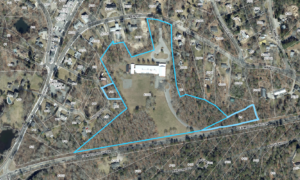Having a finished basement sounds like a dream come true for many homeowners. Not only are you expanding the overall living area of your home, you’re potentially creating the playroom, entertainment area, or office/craft/meditation space you’ve always wanted. But, where should you begin? What does it involve? And how much will it cost?
Before you run out to the hardware store, there are a few things to consider. First of all, how much of it can you do yourself, and how much of it will require a professional? What’s your vision for this space? If you have an extra bedroom space in mind, are you planning on including a bathroom? If this is the case, you’ll need the services of a licensed plumber and electrician. It’s important to know your limits.
Framing it out, installing installation and hanging drywall, however, are activities most do-it-yourselfers can handle on their own. Don’t forget to find out what kinds of permits, if any, your town requires for this kind of work. Your home’s heating, ventilation and air-conditioning systems may have been installed based on upper-level requirements. Make sure an HVAC contractor confirms that you have the right equipment to serve the basement as well.
Because a basement is partially or completely beneath the ground level, it’s important to check radon levels if you plan to spend lots of time in this space. Radon is an odorless radioactive gas that seeps into basements from surrounding soils. There are tests you can buy to check it yourself, or you can hire a licensed radon contractor. Your local utility company may also offer radon testing.
Moisture is also something you’ll want to think about. Basements can be prone to moisture and you’ll want to address that so your new living space will remain dry and comfortable. In many cases, a dehumidifier will do the trick. More importantly, ensure that there is good drainage from your roof and away from your foundation. Also, have good ventilation from the bathrooms and the kitchen to the outside, as well.
Think about the type of flooring you want. Wall-to-wall carpeting has been popular over the years as the choice for finished basements due to its ability to help muffle sound and make a room feel cozier. If you prefer not to vacuum, however, vinyl planks, ceramic tile, and engineered wood flooring can also be used to achieve the look and feel you want.
Keep in mind that you should have a plan for emergencies when finishing a basement. Local building codes may require egress windows that must be large enough for a firefighter in full gear to get into a burning house, and for occupants to safely escape if stairways are blocked by fire.
The cost of finishing a basement varies widely, depending on what you want and if you can do some of the work yourself or not. According to HomeGuide.com, the average cost to finish a basement in 2020 is $32 to $47 per square foot, or between $22,000 and $46,000 if you have separate rooms. An open-plan basement remodel costs $2,000 to $5,000 less than with rooms. Basement renovation costs depend on the layout, if framing and drywall are needed, materials, and construction labor.
Finishing a basement can be a great investment. The average return on investment for a basement project nationally is currently around 75 cents on the dollar. A basement project is also likely to add new functionality to your home, meaning more bedrooms, more efficient storage, and more space to entertain. It’s definitely something worth considering.























